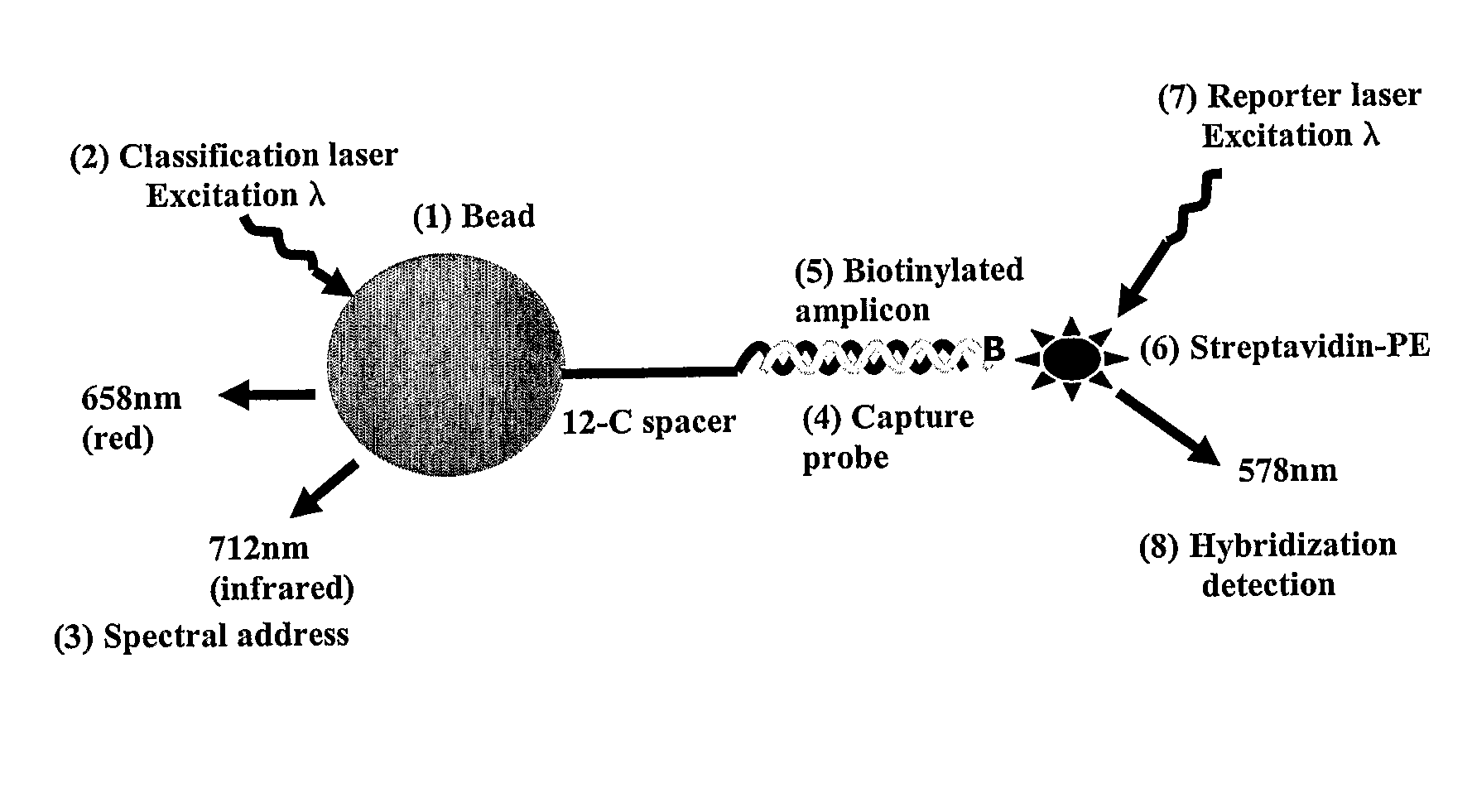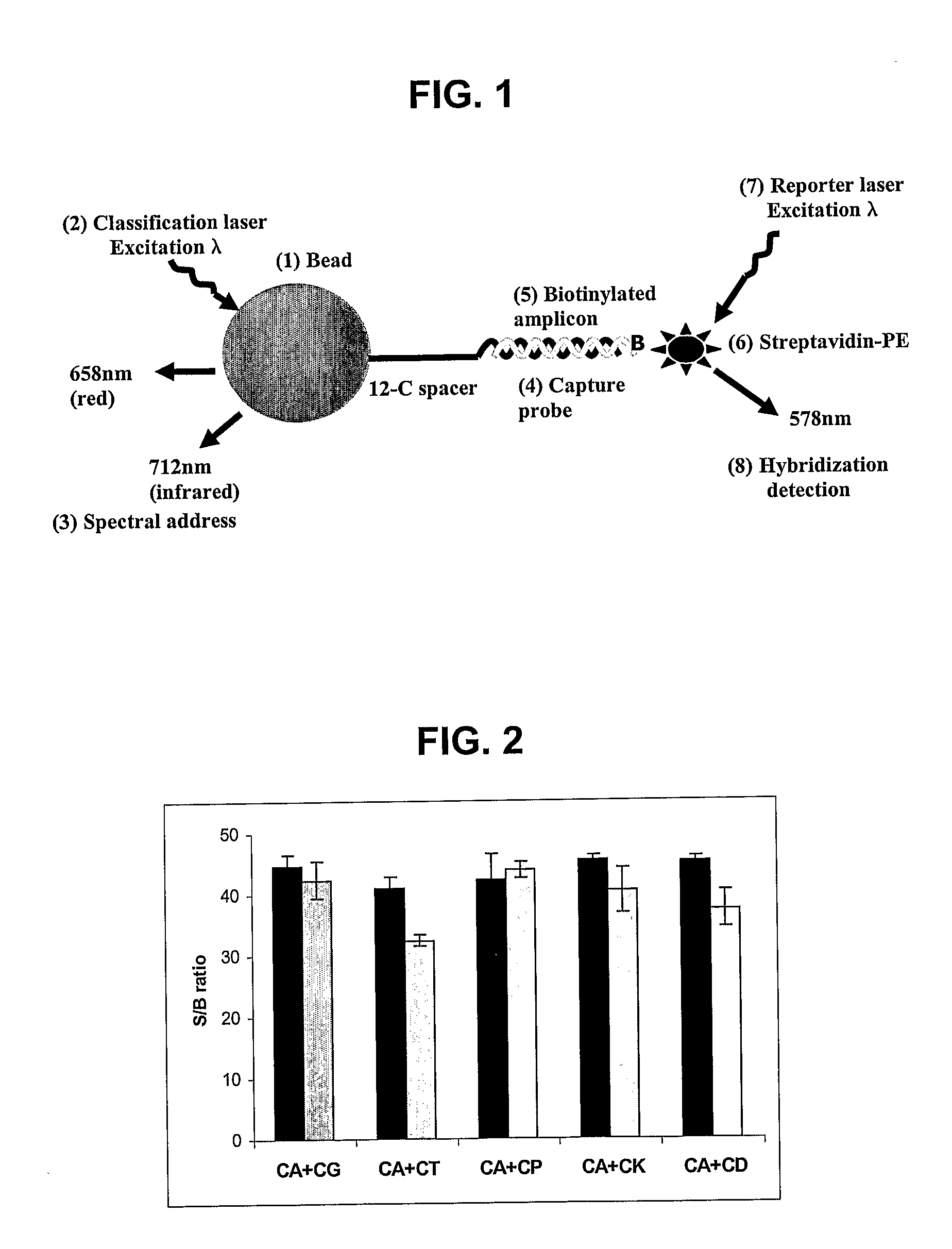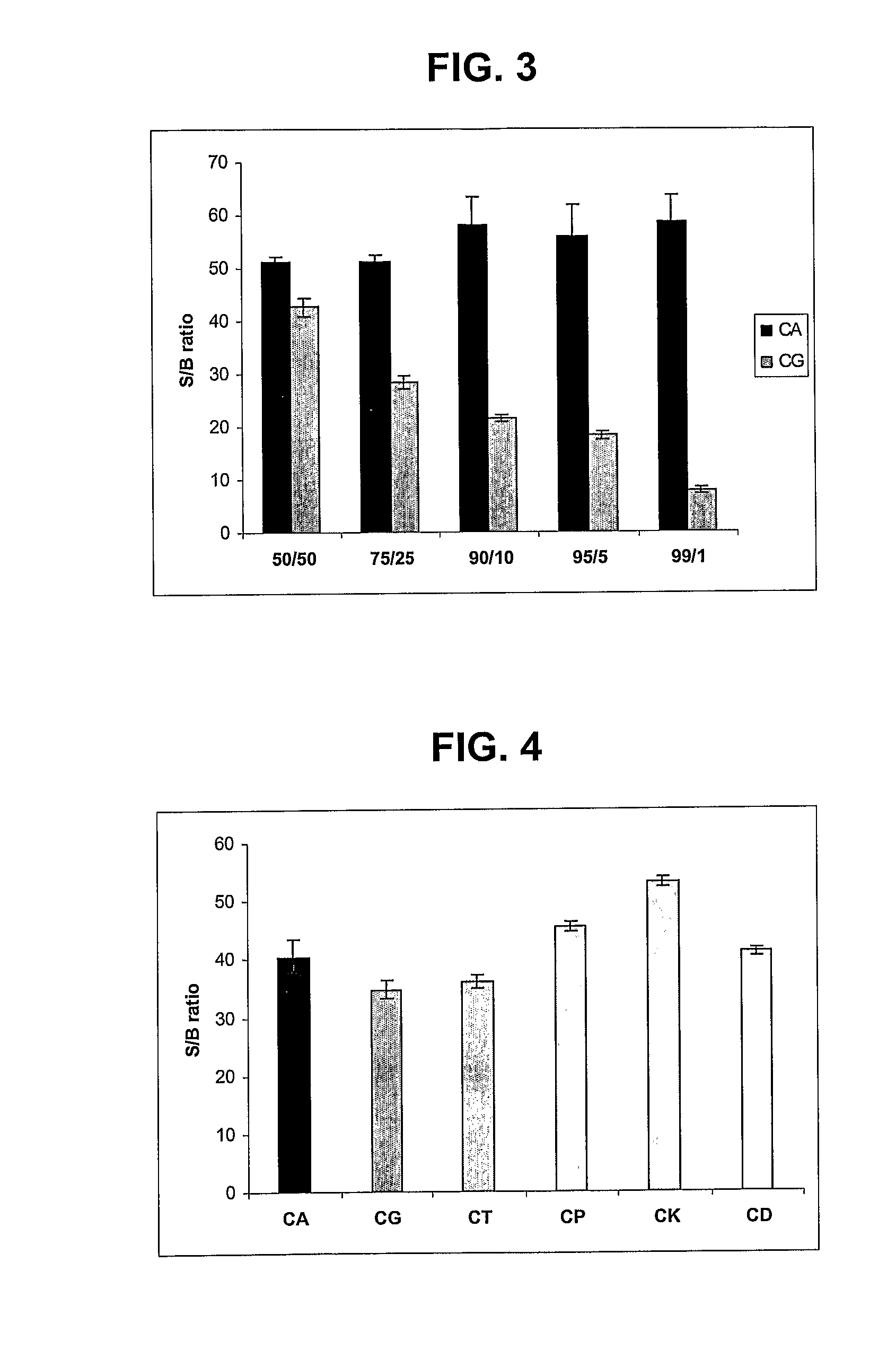Compositions and Methods for the Detection of Candida Species
a technology of composition and detection method, applied in the field of composition and methods for the detection and identification of candida species, can solve the problems of time-consuming and laborious, mucosal integrity, and the inability to identify i, i>species by conventional morphology and assimilation tests, and achieve the effect of high signal-to-background ratio
- Summary
- Abstract
- Description
- Claims
- Application Information
AI Technical Summary
Benefits of technology
Problems solved by technology
Method used
Image
Examples
example 1
Representative Materials and Methods
[0159]This Example describes materials and methods used in following Examples 2-5.
A. Microorganisms
[0160]Twenty-five strains of six different Candida species commonly isolated from patients with candidemia (Trick et al., Clin. Infect. Dis., 35:627-630, 2002) were obtained from the Mycotic Diseases Branch Culture Collection, Centers for Disease Control and Prevention. The isolates used and their respective origins are listed in following Table 1:
TABLE 1Source and characteristics of Candida species isolates used for probetestingIdentificationOrganismno.aSource and / or characteristicsC. tropicalisWO 745UnspecifiedC. tropicalisCDC 99-412Blood, MarylandC. tropicalisCDC 00-250Blood, ConnecticutC. tropicalisATCC 750BronchomycosisC. glabrataCDC 99-283Blood, ConnecticutC. glabrataCDC 99-377Blood, ConnecticutC. glabrataCDC 99-508Blood, ConnecticutC. glabrataCBS 861Mouth, The NetherlandsC. glabrataCBS 860Urine, The NetherlandsC. dubliniensisMF 663Vagina, New ...
example 2
C. albicans and C. dubliniensis Probes Outperform Other Probes Specific for these Fungal Pathogens
[0172]This Example demonstrates that disclosed C. albicans and C. dubliniensis probes provide surprisingly better signal-to-background (S / B) ratios than do currently available probes specific for these particular Candida species.
[0173]Previously, Elie et al. (J. Clin. Microbiol., 36:3260-3265, 1998) created the following panel of probes specific for 18 Candida species for use in a PCR-EIA detection format:
SEQIDProbeSequenceNO.SourceCA1AT TGC TTG CGG CGG TAA5C. albicansCGT CCCD1AA GGC GGT CTC TGG CGT6C. dubliniensisCGC CCCGTA GGT TTT ACC AAC TCG7C. glabrataGTG TTCGETT TAC CAA CTC GGT GTT8C. glabrataGAT CTGUCC CGG CCT TAC AAC AAC9C. guilliermondiiCAA ACCHCC GTT GGT GGA TTT GTT10C. haemuloniiTCT AAKFGA GAC TCA TAG GTG TCA11C. kefyrTAA AGCKGG CCC GAG CGA ACT AGA12C. kruseiCTT TTLA2AA AGC GAG GGG CCT TCT13C. lambicaGCG CGLA4GC GAG GGG CCT TCT GCG14C. lambicaCGA ACLUCT CCG AAA TAT CAA CCG15C....
example 3
Identification and Differentiation of Candida Species
[0179]This Example demonstrates that CA2, CGE, CT, CP, CK, and CD2 specifically bind homologous DNA and do not significantly react with heterologous DNA.
[0180]The S / B ratio obtained for each species probe tested with its homologous DNA target was significantly greater than that obtained for probes tested against heterologous DNA targets as shown in Table 3.
TABLE 3Specificity of probes used to detect Candida species DNATarget DNAMean S / B ratio for indicated probeb(no.)aCA2CGECTCPCKCD2C. albicans58.7 ± 1.2 0c0000(5)C. glabrata046.9 ± 2.10000(5)C. tropicalis0053.2 ± 3.8000(4)C. parapsilosis00059.9 ± 1.600(5)C. krusei000054.7 ± 3.70(3)C. dubliniensis0000056.6 ± 1.9(3)aNumber of isolates of each species tested in three separate experiments.bThe S / B (sample-to-background) ratio is generated by dividing the median fluorescence intensity of the test sample by the median fluorescence intensity for samples containing dH2O instead of target ...
PUM
| Property | Measurement | Unit |
|---|---|---|
| Angle | aaaaa | aaaaa |
| Composition | aaaaa | aaaaa |
| Length | aaaaa | aaaaa |
Abstract
Description
Claims
Application Information
 Login to View More
Login to View More - R&D
- Intellectual Property
- Life Sciences
- Materials
- Tech Scout
- Unparalleled Data Quality
- Higher Quality Content
- 60% Fewer Hallucinations
Browse by: Latest US Patents, China's latest patents, Technical Efficacy Thesaurus, Application Domain, Technology Topic, Popular Technical Reports.
© 2025 PatSnap. All rights reserved.Legal|Privacy policy|Modern Slavery Act Transparency Statement|Sitemap|About US| Contact US: help@patsnap.com



